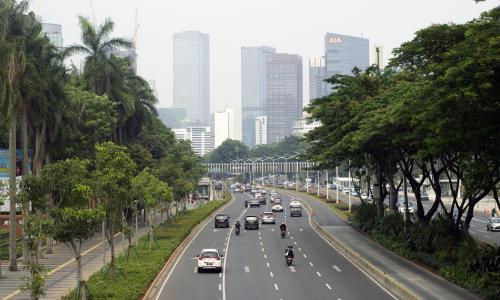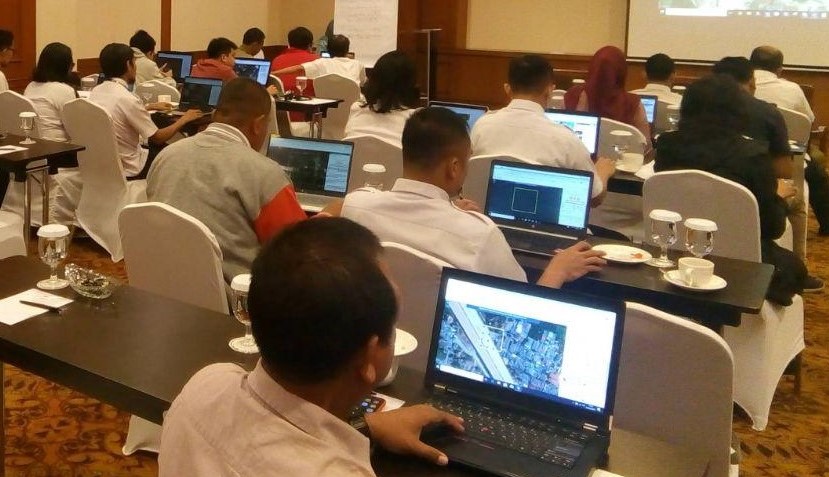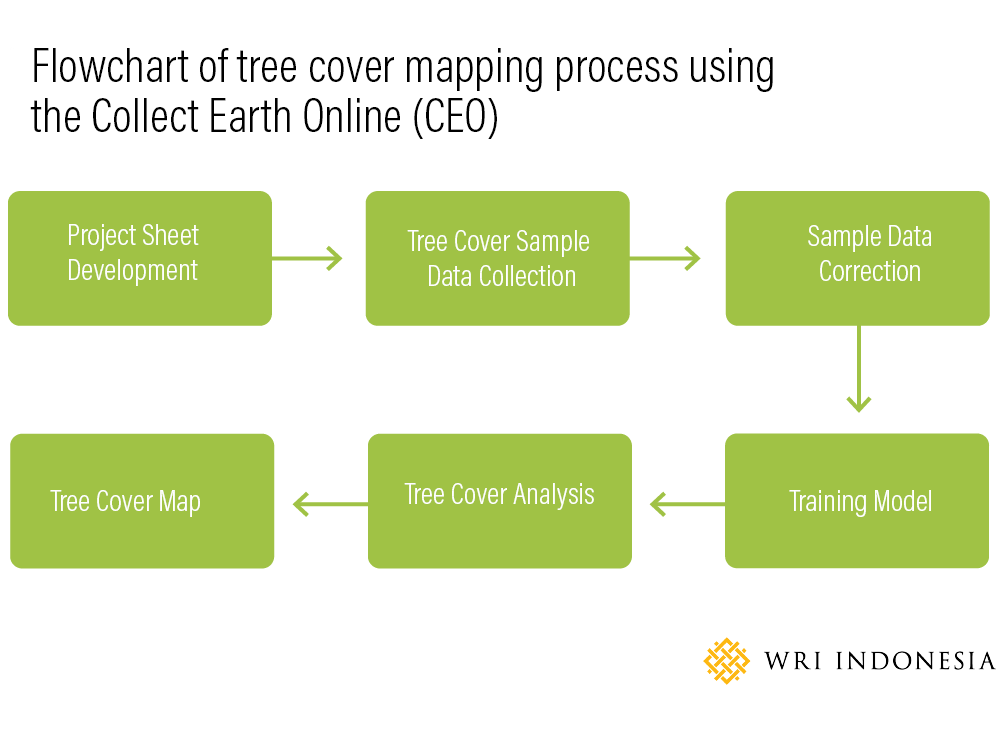
4 Benefits of Participatory Tree Mapping for Jakarta's Development
Jakarta, the densely populated capital city of Indonesia, is facing many urban problems, such as air quality degradation and flooding.
In 2019, Jakarta was recorded to have the highest pollution level in the world with an Air Quality Index (AQI) of 188 or unhealthy. According to the World Health Organization (WHO), air pollution may cause risks of early fatality, particularly from heart disease, stroke, lung cancer and acute respiratory infection in children.
Other than air pollution, flooding is also a huge issue for Jakarta. In early 2020, flooding in greater Jakarta displaced thousands and killed 9 people, with an estimated total material loss of Rp960 billion.
In the mitigation of flooding and air pollution, trees can be a solution. Trees are proven to improve urban air quality as they function to absorb and trap air pollutants from motor vehicles, industrial machineries, infrastructure development, electronic device use and others. In the prevention of floods, tree crowns can catch rainfall and reduce the volume of runoff. Trees also increase water retention in soil through their root system and the production of organic wastes in soil.
Unfortunately, Jakarta’s rapid development has often resulted in the decline of trees. Take the construction of light rail transit (LRT). It displaced 2,551 trees along the Rawamangun-Dukuh Atas route. Although there is a requirement to replace the trees cut down tenfold, the lack of land has delayed the planting of replacement trees.
The DKI Jakarta Government is currently trying to improve its tree management system. To that end, Jakarta’s tree cover map is needed to be used as reference in tree management from greening plan, seedling, inventory taking, maintenance and tree protection, including tree cutting. The tree cover map can also be used in urban infrastructure development planning to balance between physical development and urban environmental preservation.
Why is Participative Tree Cover Mapping Necessary?
1. Knowledge sharing for better data accuracy
In urban areas where land is used for different functions, trees are more difficult to identify on satellite images compared to areas with uniformed land covers such as forests and plantations. The participation of multiple parties with knowledge of the actual condition will improve the accuracy and speed of tree identification on satellite images. A possible challenge in this process is subjectivity, which may affect tree identification accuracy. Therefore, verification among participants must be done in objects identification on satellite images to ensure the consistency of sampling data and accuracy of output from the analysis.
2. Making tree management collaboration possible
Trees are spread across public and private spaces in Jakarta. In public spaces such as parks, urban forests and green lanes, the trees are mostly owned by the local government or the central government. In private spaces, the trees are owned by individuals or private institutions, making it impossible for the government to manage. Tree cover mapping can help measure the proportion of tree cover area to the public space and private space to be used as reference in coming up with tree management collaboration strategies between the local government, central government, private sector and the people.
3. Improved ownership and investment over trees
Participative mapping directly involves the stakeholders in the tree cover mapping process. Such contribution can take the form of information on the real condition or interpretation. The process is hoped to improve their sense of ownership over the resulting tree cover map and increase their investment in trees and thus encouraging their participation in the effort for data improvement and tree preservation.
4. Encouraging a more accountable, effective and efficient planning
Multiparty involvement in tree cover mapping will result in more accountable policies. With the involvement of different stakeholders, tree cover mapping will be more accepted by the public to represent the actual tree cover condition and to be used in the planning of green open space management in Jakarta. Participative mapping also solves different tree cover mapping challenges such as budget, human resources, tools and time constraints.
Reflecting on participative mapping in Jakarta and the great benefits it offers, participative mapping can be implemented for the development of a tree cover map in other regions in Indonesia.

Participative tree cover mapping in Jakarta using the CEO tool. Photo by Ahmad Sahab/WRI Indonesia
Tree Cover Mapping Using Crowdsourcing Technology
In a participative tree cover mapping workshop by the DKI Jakarta Government, the Collect Earth Online (CEO) platform was introduced. CEO is a web-based technology that allows the users to collaboratively interpret high-res satellite images.
When it comes to participative mapping, CEO has several advantages, including: 1) free and open access, 2) easy to use without requiring any specific software, 3) ability to automatically align different satellite images, 4) ability to create tree cover map for a sizeable area with a relatively small number of samples, 5) ability to accommodate the involvement of many parties and 6) online data collection both simultaneously and separately in different times and places.

Tree cover map is essential for tree management in urban areas such as Jakarta. Participative tree cover mapping will give stakeholders an idea of the actual condition of tree cover in Jakarta, which is expected to foster investment and multiparty collaboration in tree management for a green Jakarta.